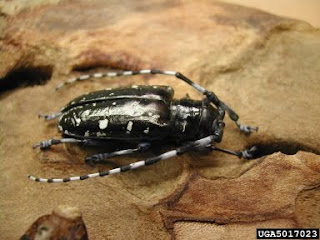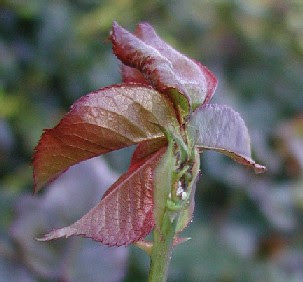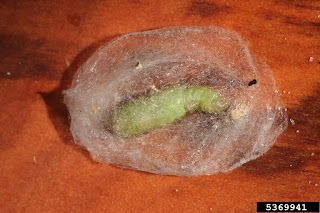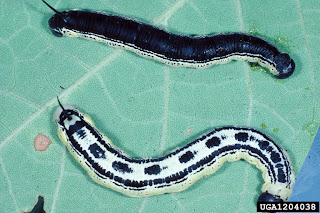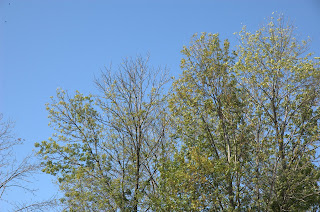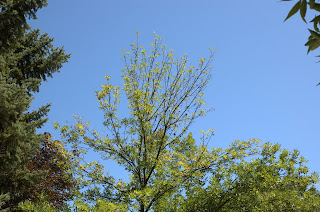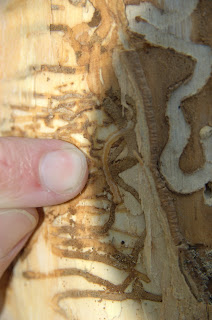Yucca plant bug adult. Photo provided by: Jim Baker, North Carolina State University, Bugwood.org
Serpentine leaf miner on Magnolia. Photo by: Patti Kunkel
Redheaded flea beetle adult on Joe Pye weed.
 Close-up of redheaded flea beetle adult. Photo by: Brian A. Kunkel, University of Delaware, Ornamentals IPM Extension Specialist
Close-up of redheaded flea beetle adult. Photo by: Brian A. Kunkel, University of Delaware, Ornamentals IPM Extension Specialist
 Palestriped flea beetle on cabbage. Photo provided by: Brian A. Kunkel, University of Delaware, Ornamentals IPM Extension Specialist
Palestriped flea beetle on cabbage. Photo provided by: Brian A. Kunkel, University of Delaware, Ornamentals IPM Extension Specialist
Invasive Insects to WATCH for because there are no recorded instances in Delaware yet!!
Ash trees with thinning canopies due to EAB feeding. Photo provided by: Brian A. Kunkel, University of Delaware
Epicormic growth and thinning canopy resulting from EAB feeding. Photo provided by: Eric R. Day, Virginia Polytechnic Institute and State University, Bugwood.org
 Emerald Ash Borer (EAB) adult. Photo provided by: Debbie Miller, USDA Forest Service, Bugwood.org
Emerald Ash Borer (EAB) adult. Photo provided by: Debbie Miller, USDA Forest Service, Bugwood.org
 Split bark on trunk or branches of ash trees may indicate the presence of EAB. Photo provided by: Brian A. Kunkel, University of Delaware
Split bark on trunk or branches of ash trees may indicate the presence of EAB. Photo provided by: Brian A. Kunkel, University of Delaware
 Notice the serpentine tunnels caused by EAB feeding. Larva is next to the tip of the finger. Tunnels are directly underneath the bark of the tree and are packed with frass. Photo provided by: Brian A. Kunkel, University of Delaware
Notice the serpentine tunnels caused by EAB feeding. Larva is next to the tip of the finger. Tunnels are directly underneath the bark of the tree and are packed with frass. Photo provided by: Brian A. Kunkel, University of Delaware
 Oviposition scar caused by female Asian longhorn beetles (ALB). Photo provided by: Dennis Haugen, USDA Forest Service, Bugwood.org
Oviposition scar caused by female Asian longhorn beetles (ALB). Photo provided by: Dennis Haugen, USDA Forest Service, Bugwood.org
Damage caused by ALB. Photo provided by: Dennis Haugen, USDA Forest Service, Bugwood.org
Emergence hole caused by an emerging ALB adult. Photo provided by: Dennis Haugen, USDA Forest Service, Bugwood.org
Adult Asian longhorn beetle (ALB). Photo provided by: Dean Morewood, Health Canada, Bugwood.org













